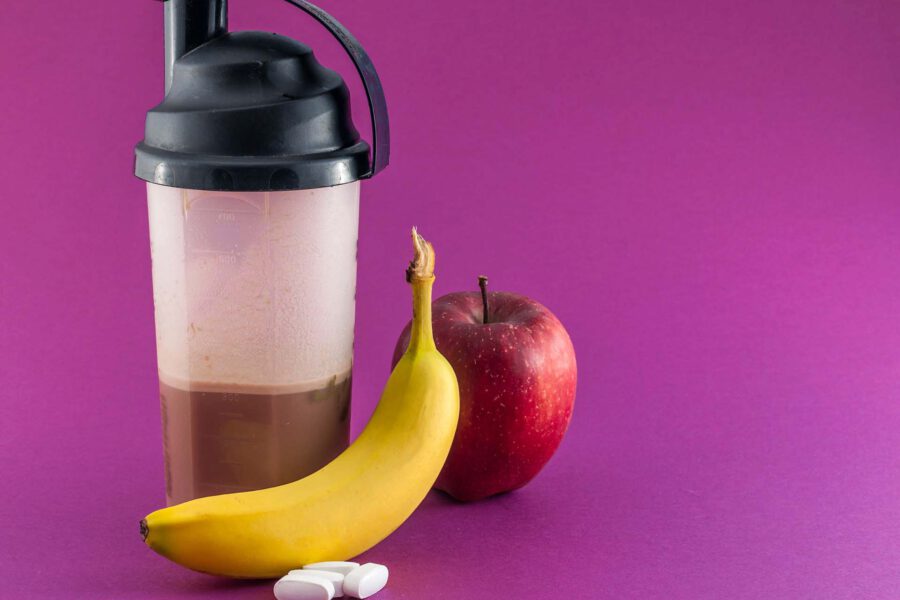How to Recover From Intense Workouts
Your workouts ask a lot of your body and your mind. They place a huge amount of stress on your muscles and challenge your cardiovascular system to the limit. A smart, consistent practice of recovery is critical for injury prevention and consistent training.
When you're fully recovered, you’ll be able to give maximum effort on every gym session in order to get maximum results.
In this article, we reveal four simple practices that should form a part of your regular post-workout strategy.
Stretching is the most underrated aspect of workout recovery. Prior to your workout you should perform dynamic stretching that prepares you for the exercises to come. Once the workout is over, though, you should do static stretches to increase flexibility and muscle pliability. This will help to maintain good tissue length and joint mobility.
Your workout is responsible for the buildup of metabolic by-products, such as lactate, in your body. After the workout is over, you need to flush these metabolites from your system. You can do this by way of active recovery, which involves performing a few very light warm down moves. These could be squats with just your body weight, walking or a light jog.
The fascia is connective tissue that wraps around the muscles in the body. It can become tense or constricted while working out, which causes pain. In order to relieve this tension, you can self massage right on the gym floor with a foam roller. The technique used is known as self-myofascial release.
Foam rolling alleviates soreness and stiffness, promotes circulation of oxygenated blood,and even breaks up scar tissue and restrictions in the fascia. A foam roller also allows you to apply targeted pressure to specific spots on the muscle that may be causing pain.
Look for a high density roller that is about 3 inches (7.5 cm) in diameter. The basic technique is the same, whether you use it on the legs, back or arms. There is a lot of freedom for experimentation when using the roller. Take your time to discover what works well and feels the best for you, and manipulate the roller to the correct position. You can create your own technique to meet your needs.
Position yourself on the roller. The weight of your body will apply pressure in the muscles. Now roll back and forth slowly. When you find a tender spot in the area you are working, pause and wait for the discomfort to diminish. This could take up to one minute and may be uncomfortable.
When the area is no longer sensitive, roll up or down the muscle on the roller. When you identify any other sensitive spots, again pause and wait for the discomfort to diminish. When tender areas can be rolled over without pain, continue rolling regularly to keep the area relaxed.
Your workout will have torn and broken apart muscle fibers in your body. In order for the muscle to recover and grow back a little bigger and stronger than it was before the workout, you need to feed yourself with the right nutrients.
Protein is essential for post workout recovery because it contains amino acids, which are the building blocks of new muscle. Since it repairs muscle, you must provide the body a constant supply of protein. However, it is most critical that you get protein in your system within a couple of hours after your workout.
After your workout, your body is depleted of nitrogen. And it is only through the intake of protein that we get nitrogen into our muscles. Fats and carbohydrates do not contain nitrogen, but protein does. Nitrogen is vital in the process of replacing body cells. Unless you have a positive nitrogen balance, you will be in a catabolic state in which you are getting weaker and actually losing muscle tissue. That is why getting in your post workout protein should be a main priority.
Your workout will also use up all of the carbohydrates in your body in the form of glycogen. After your workout, getting glucose into your system is actually more important than getting protein. You need to take in a high glycemic carb. These carbs are very fast acting, so you will get the energy to your muscle cells very quickly. A great way to get these fast acting carbs in is by taking dextrose, a form of sugar which requires no digestion and is, therefore, immediately absorbed into the bloodstream. The fast acting carbs in dextrose will also spike insulin levels, which will help to get you into an anabolic state.
You should look for a post workout formula that contains whey protein AND high glycemic carbs, preferably in the form of dextrose.
Two other post workout supplements that will aid in your recovery are creatine and beta alanine. Clinical studies and in the gym experience have both shown that the best results from creatine supplementation come from taking it both before and after your workouts. Along with its well attested ability to improve strength and energy during the workout, creatine has been seen to inhibit myostatin, which is a protein that limits muscle anabolism. After the workout, creatine will be preferentially taken up by the muscle cells.
Take 5 grams before and another 5 grams of creatine after your workout.
Beta-alanine is a non-essential amino acid which combines with histadine to form the two amino-acid protein carnosine. Carnosine will increase your strength and power and provide you with more endurance. Take 2 grams of beta-alanine both before and after your workout.
About two hours after your workout you should have a whole food meal that contains 50% complex carbs (think broccoli, sweet potatoes and cauliflower) 30% protein and 20% healthy fats.
Here's a plan for women you should try:
And for men:
Sleep is the mechanism by which the human body recovers and rebuilds from the demands that we place upon it. People who push their body to the limit need higher demands than most. It is critical, therefore, that they, not only not abuse, but actually prioritize sleep. Lack of regular, quality sleep will exhibit itself in the form of impaired performance. So, make sure that you get your set point every night. How much is that?
When it comes to sleep, everyone is different. Generally the doctor recommended 8 hours is a good gauge, but some people may be able to thrive on as little as 7 hours. As a regular exerciser, you would not want to go below that number.
Make your sleep environment a tranquil place of retreat. Banish all technology and make the room as dark and airy as you possibly can at night. If you are a serious athlete, keep a record of the quality of your sleep and make adjustments as needed to improve both the quality and quantity of it.
In addition to your nighttime sleep, you should also look for an opportunity to take a 45-minute power nap. Do this once you have showered and taken your post workout shake and supplements. Nothing will help you to recover from your training session more than a little shut-eye.
Your next workout is only going to be as effective as your recovery from your last workout.
Incorporate the four areas of recovery outlined above to provide your body with the maximum opportunity to recover, rebuild and regroup for your next training session. Here’s a summary of the key recovery actions:
- Stretching / Active Recovery warm-down
- Foam Rolling
- Post workout shake containing whey protein, fast acting carbs, creatine (5g) and beta-alanine (5g)
- Sleep 7-8 hours / 45-minute post workout nap




